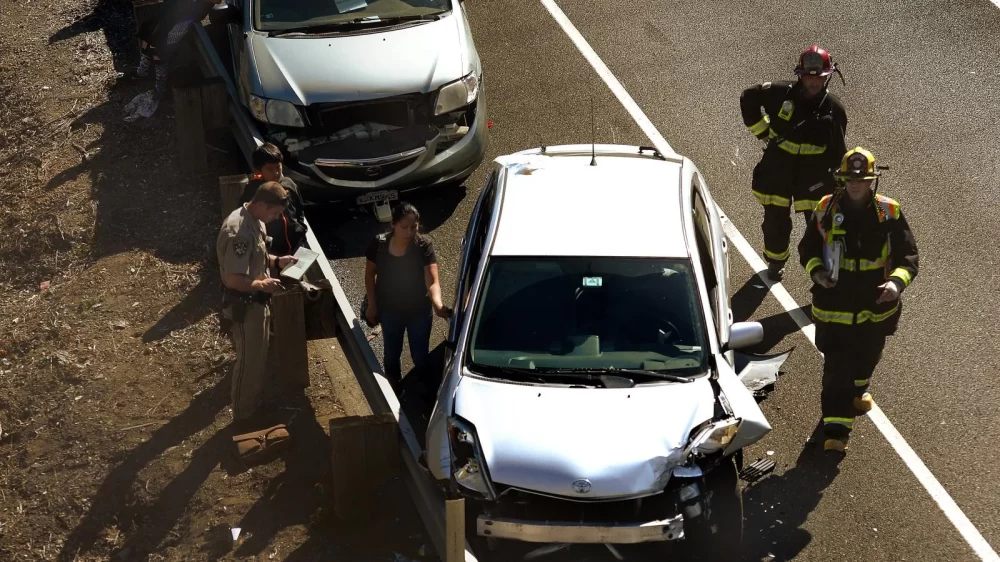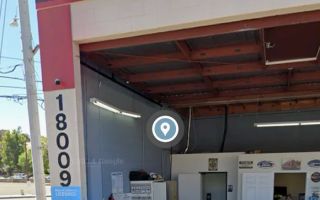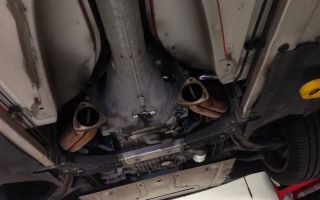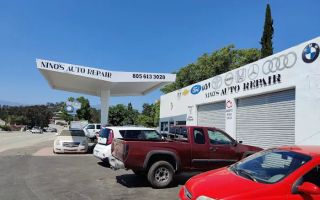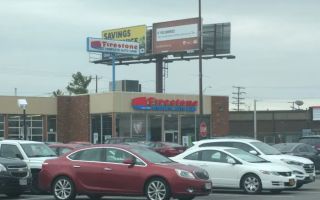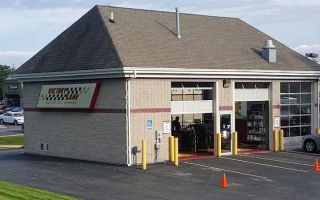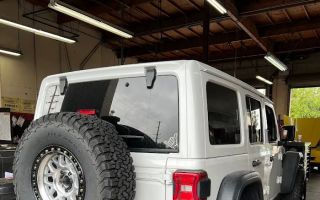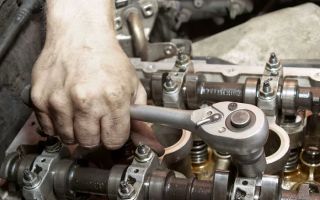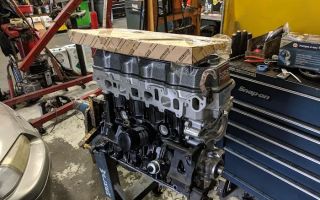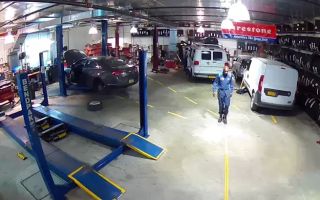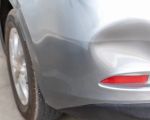Making the Right Decision: Is It Safe to Pull Over During an Emergency?
We've all been there—driving down the road when something unexpected happens. Whether it's a flat tire, engine trouble, or feeling unwell, there comes a moment when you need to decide whether it's safe to pull over. I’ve been in a few tense situations myself, and it’s not always easy to make that call. The pressure to act quickly can cloud your judgment, but pulling over safely is critical to ensure both your safety and the safety of others on the road. In this guide, I’ll walk you through the process of judging when it’s safe to pull over during an emergency, drawing from real-life experiences and practical tips to help you navigate these stressful moments.
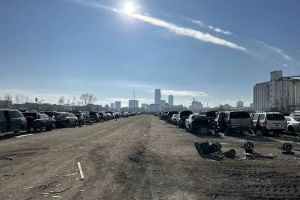
U-Pull-It
1405 Grace St, Omaha, NE 68110, USA
1. Assessing Your Vehicle’s Condition
One of the first things I learned after a couple of breakdowns was that the condition of your vehicle should dictate whether or not you should pull over. In some situations, it’s better to keep moving, while in others, stopping might be the best option. Here’s how I assess my vehicle’s condition when making this critical decision:
- Engine Warning Lights: If your dashboard starts lighting up with warning signs, such as a check engine light, low oil, or overheating warning, it's time to consider pulling over. I remember once driving in the middle of nowhere when my engine light came on, and I felt that rising panic. Instead of risking further damage, I pulled over safely on the shoulder. In some cases, continuing to drive could cause more harm than good.
- Flat Tire or Tire Blowout: A flat tire is another situation where it’s important to assess whether it’s safe to stop. If the tire is just slightly low, it might be okay to drive a bit further, but if you hear a loud pop or feel vibrations, it’s time to pull over immediately. I once had a blowout on a busy highway, and even though my heart was racing, I carefully guided my car onto the shoulder and turned on my hazard lights.
- Loss of Power: If your car is stuttering or losing power, it’s essential to pull over to avoid further damage or creating a hazard for other drivers. In one instance, my car began stuttering on a busy road, and I quickly pulled over when I noticed the car losing speed and power. If I had waited longer, I might have stalled in the middle of traffic, which could have been dangerous.
2. Evaluating Road Conditions and Traffic Flow
Even if your car is in good condition, sometimes the road conditions or the flow of traffic can impact whether it’s safe to pull over. I've been in situations where I had to think on my feet about the surrounding environment. Here’s how to evaluate the safety of your surroundings:
- Busy Highways: If you're driving on a busy highway or a multi-lane road, it can be risky to pull over abruptly, especially if the shoulder is narrow or non-existent. I recall one time when I was driving on a major interstate when my car started making strange noises. At first, I hesitated to pull over because the shoulder was extremely narrow, and traffic was moving fast. Instead of pulling over immediately, I slowed down gradually and kept my car in motion until I found a safer, wider area to stop.
- Roadside Hazards: Look for any potential hazards like blind curves, construction zones, or heavy traffic ahead. In one instance, while traveling through a winding mountain pass, I started to feel dizzy. I knew it wasn’t safe to pull over in a sharp curve, so I continued driving slowly until I found a straight stretch of road. In these situations, waiting for a safer spot to stop is often the wisest choice.
- Weather Conditions: Weather can make it tricky to judge when it’s safe to pull over. Fog, heavy rain, or snow can significantly reduce visibility, making it harder to judge the best time to stop. On one foggy evening, I was driving through a dense patch of mist and couldn’t see more than a few feet ahead. Rather than risk driving further in poor visibility, I safely pulled over and turned on my hazard lights, waiting until conditions improved.
3. Considerations for Your Personal Safety
Another factor I always consider when deciding whether to pull over is my own safety and that of any passengers. Emergencies can be stressful, but you must remain calm to make the best decision. Here’s what I keep in mind:
- Stay Calm and Focused: Panic can cloud your judgment, and I’ve experienced that feeling of urgency when something goes wrong. I’ve learned that taking a deep breath and focusing on my surroundings can help me make the right decision. When I once found myself stuck on the side of the road, I took a moment to assess my situation calmly and figured out the safest place to stop.
- Visibility to Other Drivers: Your visibility to other drivers is key in emergency situations. I’ve learned that pulling over to a well-lit area, if possible, and making sure my car is clearly visible is one of the best things I can do to stay safe. If you’re driving at night or in bad weather, ensure your hazard lights are on so others can see you. When I got stuck during a rainstorm one evening, keeping my hazard lights on helped alert drivers and keep them from swerving too close.
- Personal Health or Discomfort: If you're feeling unwell, disoriented, or tired, pulling over might be the safest option. I remember one particularly tiring trip when I started feeling dizzy and light-headed. I knew my safety was more important than rushing to my destination, so I pulled over to rest and regain my composure. It's essential to listen to your body and recognize when you’re not fit to continue driving.
4. How to Safely Pull Over
Once you’ve made the decision to pull over, it’s important to do so as safely as possible. The way you handle the situation once you’re stopped can make all the difference. Here are the steps I follow to ensure a safe stop:
- Signal Early: Always signal well in advance to let other drivers know you’re pulling over. In one case, I was able to avoid a close call by signaling to the car behind me, giving them plenty of time to react.
- Slow Down Gradually: Never slam on the brakes or make sudden stops. Gradually slow down and steer your car to the side of the road. I’ve made it a habit to gradually decelerate to avoid jarring movements or stalling in a hazardous location.
- Choose a Safe Location: If possible, stop in a well-lit area, far from traffic, and avoid stopping in curves or blind spots. I always try to aim for a straight section of the road with enough space for my car and other vehicles to pass safely.
- Exit the Vehicle Safely: If you need to leave the vehicle, make sure you do so from the passenger side, away from traffic. One time, after pulling over on a busy road, I waited for a safer moment to exit the vehicle. I felt much safer staying inside until it was clear.
5. When to Call for Help
If you ever feel uncertain about whether it’s safe to continue driving, or if your vehicle is unsafe to operate, don’t hesitate to call for roadside assistance. I’ve done it myself, and it’s always better to wait for help than risk further complications or an accident. Whether it’s a flat tire or a more serious mechanical issue, I’ve found that getting professional assistance is sometimes the best choice for safety.

